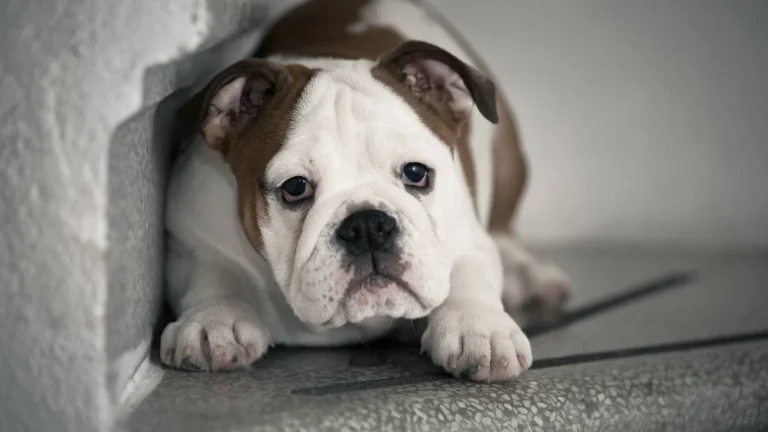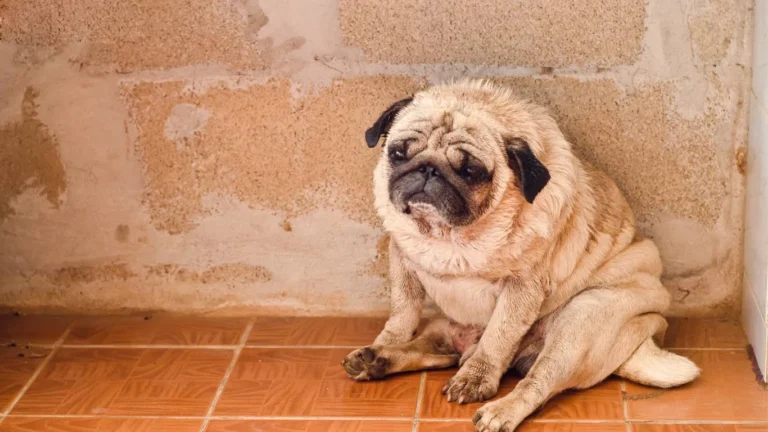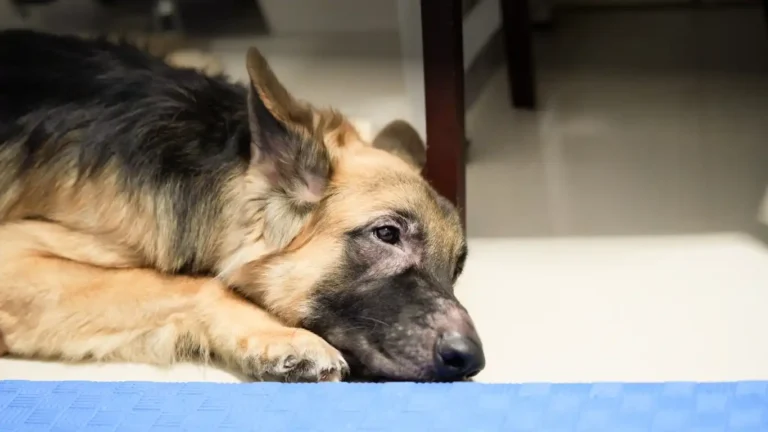How to Handle a Dog That Eats Too Fast – 5 Expert Solutions to Try
If you’ve ever had a dog that seems to inhale their food at lightning speed, you know how concerning it can be. It’s not just a messy mealtime, but it can also lead to some serious health issues for your furry friend. As a veterinary assistant with a focus on nutrition, I’ve seen firsthand how fast-eating habits can affect a dog’s well-being. Whether it’s causing bloating, discomfort, or more severe conditions like gastric torsion (bloat), it’s crucial to know how to handle a dog that eats too fast. In this post, we’ll dive into why dogs eat too quickly and what you can do to help them slow down and enjoy their meals in a healthier way.
Understanding Why Dogs Eat Too Fast

First things first, let’s take a look at why some dogs scarf down their food so quickly. While it might seem like they’re just overly excited or greedy, there’s actually a few different reasons behind this behavior.
1. Evolutionary Instincts
Dogs, especially those with a history of hunting, often have a strong instinct to eat quickly. In the wild, if a dog didn’t eat fast enough, they could risk losing their food to other predators. So, even though our pets are safe at home now, that survival instinct still plays a role in how quickly they consume their meals.
2. Competition with Other Pets
If you have multiple pets in your household, your dog might be eating fast because they’re trying to get the most food before someone else does. This behavior can be especially common in multi-pet households where there’s an unspoken “competition” for resources, including food.
3. Lack of Training or Structure
In some cases, dogs eat too fast because they’ve never been trained to slow down. Puppies raised in a high-energy environment or those with little structure might not learn the proper eating habits. Without a calm, structured environment, dogs may feel rushed during mealtime and gobble down their food without chewing properly.
4. Hunger or Anxiety
Dogs that are frequently hungry or anxious may eat quickly as a way to deal with their emotions. Anxiety-related eating can be a sign that something’s off in their routine, and they might scarf down their food as a coping mechanism. Similarly, if your dog is fed irregularly or doesn’t get enough food during the day, they might try to eat as fast as possible when they finally get their meal.
Risks of Eating Too Fast
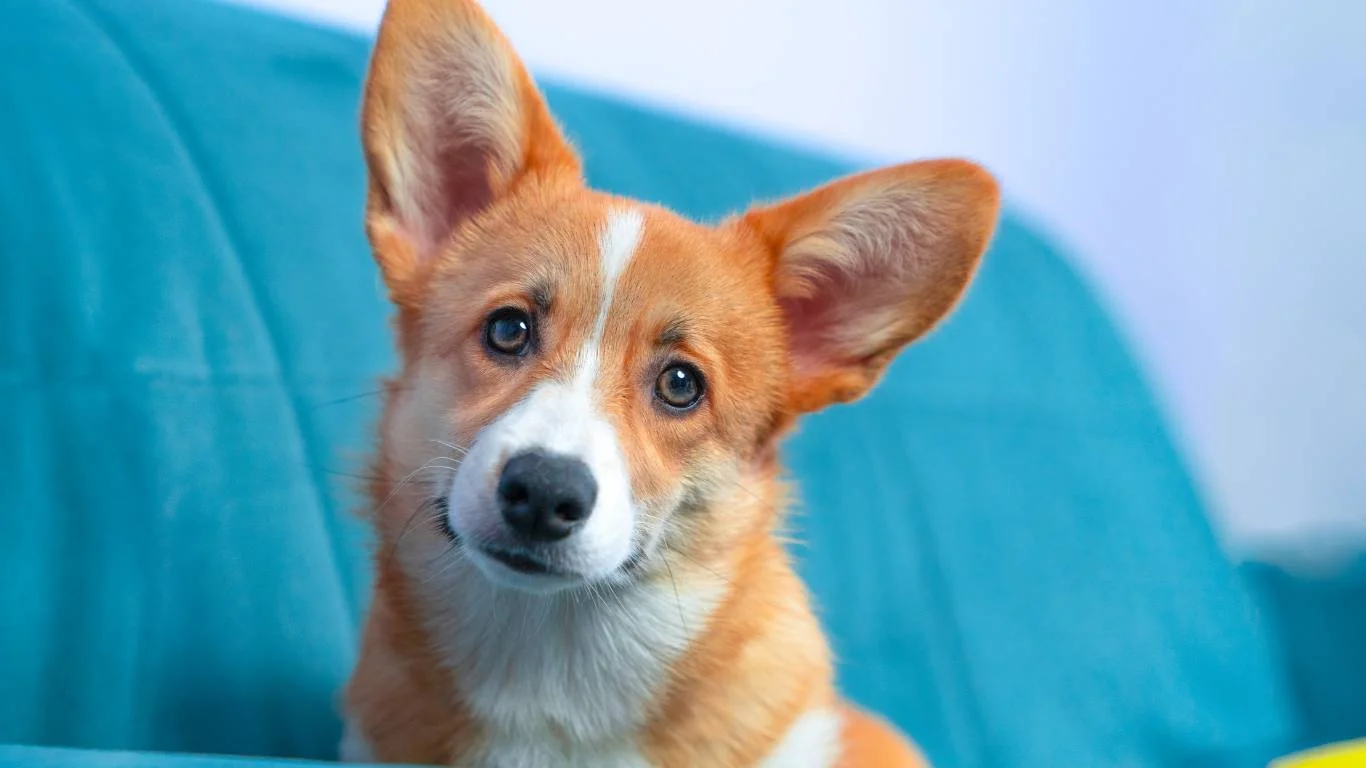
While it might seem like a harmless habit, eating too fast can cause a number of health issues for your dog. As a veterinary assistant, I’ve witnessed some of these problems firsthand, and they’re more common than you might think.
1. Bloating and Gastric Torsion (Bloat)
One of the most serious risks of eating too fast is bloating, or gastric torsion. This is a life-threatening condition where the stomach twists and fills with gas, causing extreme pain and pressure. It’s a condition that can occur within hours of eating too quickly, and in severe cases, it can be fatal if not treated immediately. Large breeds, like Great Danes or Dobermans, are especially susceptible, but smaller breeds can be affected too.
2. Choking
Another obvious risk is choking. If your dog doesn’t take the time to chew their food properly, pieces could get lodged in their throat, leading to a choking hazard. While it’s common for dogs to swallow large pieces, this can be avoided by slowing down their eating pace.
3. Vomiting
Eating too fast can also lead to vomiting. If your dog consumes food too quickly, their stomach may not have enough time to digest the food properly, which can result in them throwing up shortly after eating. This is not only uncomfortable for your dog but can also lead to further health complications if it becomes a regular occurrence.
4. Poor Digestion
Fast eating can lead to poor digestion overall. When dogs eat too fast, they don’t chew their food enough, which means they may not break down their food properly. This can lead to indigestion, gas, and discomfort. Over time, this can affect their ability to absorb essential nutrients from their food, leading to potential nutrient deficiencies.
How to Handle a Dog That Eats Too Fast

Now that we understand why dogs eat too fast and the potential risks involved, let’s talk about what you can do to slow down your dog’s eating habits. Fortunately, there are several solutions you can try to help your dog enjoy their meals more slowly and safely.
1. Use a Slow Feeder Bowl
One of the easiest ways to slow down a fast eater is by using a slow feeder bowl. These bowls are designed with ridges or obstacles that make it harder for your dog to scoop up large amounts of food at once. The design encourages your dog to take smaller bites and eat more slowly, which can reduce the risk of choking, vomiting, and bloating.
2. Divide Meals into Smaller Portions
If your dog eats too fast, consider splitting their meals into smaller, more frequent portions throughout the day. This can prevent them from getting too hungry and feeling the need to gobble down their food quickly. Instead of giving them one large meal, try offering two or three smaller meals to spread out their food intake.
3. Hand Feed Your Dog
If your dog is really struggling with fast eating, try hand-feeding them for a while. It might take a little longer, but it’s a great way to ensure they eat at a slower pace. This method also helps you bond with your dog and allows you to monitor how much they’re eating. Over time, this could help them develop better eating habits.
4. Try a Puzzle Feeder or Food-Dispensing Toys
Puzzle feeders or food-dispensing toys can turn mealtime into a fun and engaging challenge for your dog. These toys make your dog work for their food, which slows down the eating process. It’s a great way to mentally stimulate your dog while also preventing them from eating too quickly. You can find a variety of puzzle feeders that are suitable for different types of dogs.
Behavioral Tips to Encourage Slower Eating

Beyond using special bowls or toys, there are other behavioral strategies you can try to encourage your dog to eat more slowly. These methods focus on creating a calm and structured mealtime experience for your dog, which can help curb their fast-eating habits.
1. Create a Calm Feeding Environment
One of the simplest things you can do to help your dog slow down during meals is to create a peaceful eating environment. If your dog tends to eat fast because they’re anxious or distracted, try feeding them in a quiet area with minimal distractions. Avoid areas with a lot of noise, activity, or other pets that may cause your dog to rush through their food. A calm setting will help them feel more at ease and encourage slower eating.
2. Feed in Smaller, More Frequent Sessions
If your dog is the type that eats too quickly because they’re ravenous or have a lot of energy to burn, consider breaking their meals into smaller portions throughout the day. Instead of feeding them once in the morning and once in the evening, try offering them three or four smaller meals. This strategy prevents them from feeling overly hungry and lessens the temptation to scarf down their food in one sitting.
3. Introduce Meal-Distraction Activities
One fun and effective way to slow down your dog’s eating is by adding an element of fun or distraction during mealtime. This could be as simple as hiding their food in a treat-dispensing toy or making them work for it in a puzzle feeder. You can also use interactive games to keep them engaged while eating. The more focused they are on getting the food, the slower they’ll eat. It’s a win-win because they’ll enjoy mealtime more while also eating at a healthier pace.
4. Use Food Dispensers or Snuffle Mats
Another great tool to slow down fast eaters is a snuffle mat. These mats have plenty of fabric strips where you can hide your dog’s food, encouraging them to “sniff out” their meal. It’s a great way to mimic natural foraging behavior and can make the eating process last longer. It’s also a fantastic option for mentally stimulating your dog, especially if they’re the type to get bored or anxious during meals.
Healthier Diet Choices for Slower Eating
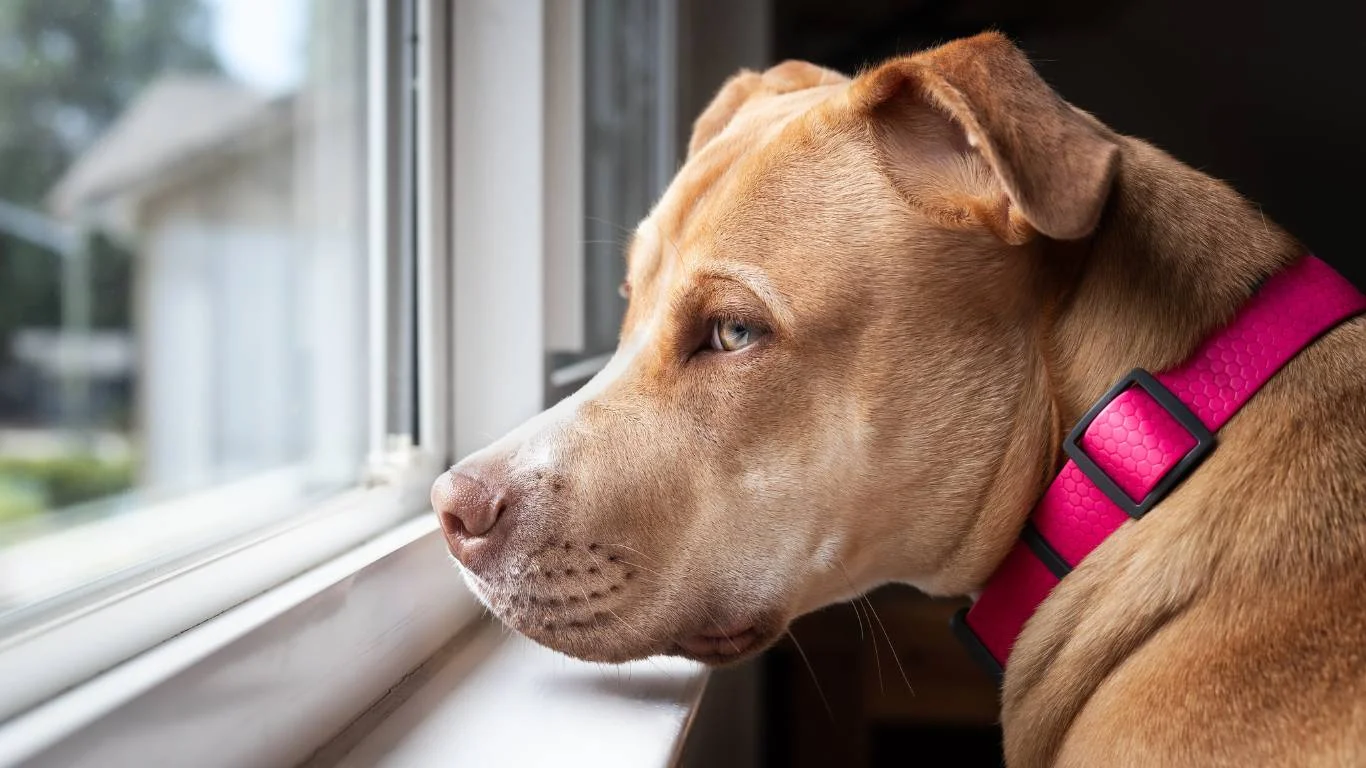
Sometimes, the key to a dog eating too fast lies in their diet. What they’re eating, how often, and how much food is in their bowl can all influence how quickly they chow down. If you’ve tried the behavior tips but your dog is still eating too fast, it might be time to look into their food choices.
1. Choose a High-Quality, Satisfying Food
Not all dog foods are created equal. Dogs that eat too quickly may be doing so because they’re not satisfied with their meals. Low-quality dog food may not be as filling or nutritious, leaving your dog feeling hungry sooner. By switching to a high-quality food that’s rich in nutrients and protein, your dog will feel fuller for longer and be less inclined to rush through their meals. Look for foods with high-quality animal protein sources like chicken, beef, or lamb, and make sure they have plenty of fiber and healthy fats to keep your dog satisfied.
2. Consider Moistening Dry Kibble
If your dog eats kibble, you might want to consider moistening it before feeding. Adding a bit of water or low-sodium broth can make the kibble more enticing and harder to eat quickly. This gives your dog the chance to savor each bite, promoting slower eating. Plus, it helps to keep them hydrated, which is always a plus!
3. Opt for Larger Pieces of Food
Another option is to offer your dog larger pieces of food. If you’re feeding dry kibble, try switching to a bigger kibble size or mix in larger treats. Larger pieces are harder for your dog to gulp down, so they’re forced to slow down and chew more. This simple change can make a big difference in how quickly your dog eats. Just be sure to monitor the portion size so your dog doesn’t consume too many calories!
4. Switch to a Raw or Fresh Diet
Some owners have found that transitioning their dog to a raw or fresh food diet can help with fast eating. Raw diets, which typically consist of meat, vegetables, and bones, can slow down a dog’s eating habits because the food requires more chewing. Additionally, raw diets often mimic what dogs would eat in the wild, providing them with a more natural and satisfying eating experience. If you decide to try this option, be sure to consult with a veterinarian to ensure that your dog is getting all the necessary nutrients.
Monitor and Adjust as Needed

Every dog is different, and what works for one may not work for another. As you implement these strategies, be sure to keep a close eye on your dog’s eating habits and adjust your approach as needed. The goal is to find a balance that keeps your dog happy, healthy, and eating at a more controlled pace.
1. Track Progress and Monitor Health
It’s important to track your dog’s progress when you’re trying to slow down their eating. Keep an eye on how long it takes for them to finish their meals and observe any changes in their behavior or digestion. If they seem to be getting more relaxed during mealtime, that’s a great sign that your efforts are working! If you notice that the problem persists or worsens, it may be time to try a different approach or consult with your vet.
2. Keep an Eye on Weight
As you adjust your dog’s mealtime routine, don’t forget to monitor their weight. Sometimes, slowing down a dog’s eating can result in them consuming fewer calories, which could lead to weight loss. Keep track of their weight to ensure they’re still maintaining a healthy body condition. If your dog starts losing too much weight, you might need to adjust the amount of food you’re giving them or consult with your vet for further advice.
Training Techniques to Reinforce Slower Eating Habits
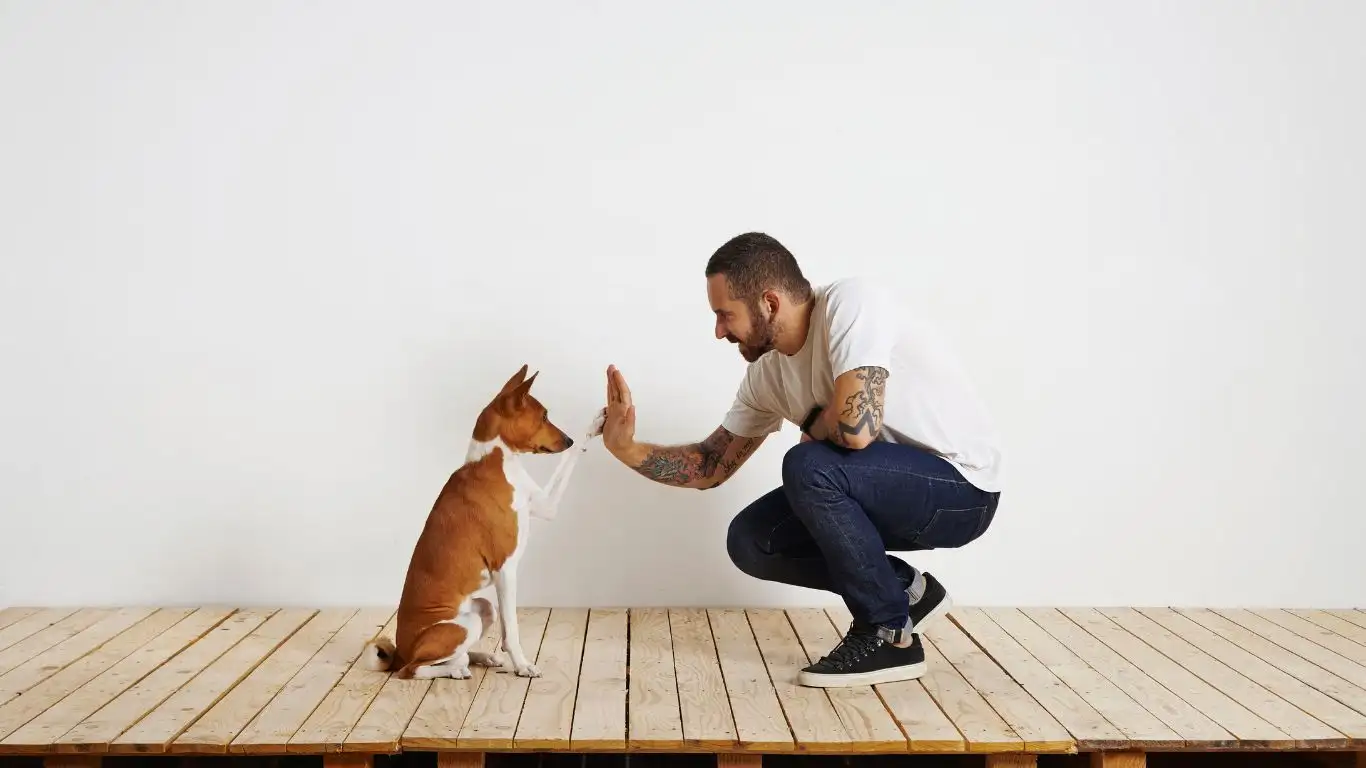
Slowing down your dog’s eating habits doesn’t always require gadgets or specialty bowls. Sometimes, it really comes down to good ol’ consistent training. As someone who’s worked with pet parents in a clinical setting, I’ve learned that the way we interact with our dogs around mealtimes plays a huge role in shaping their behavior. Dogs are creatures of habit, and when you combine patience with a structured routine, you can make lasting changes that stick.
1. Practice “Wait” or “Leave It” Commands
One of the most effective ways to train your dog to slow down at mealtime is to use commands like “wait” or “leave it.” Before placing the bowl down, ask your dog to sit and wait for a release word like “okay” before they start eating. At first, it might be just a second or two of waiting, but gradually increase the time. This helps build impulse control and encourages your dog to approach meals with more patience rather than frenzy.
2. Reward Calm Behavior
Dogs thrive on positive reinforcement. If your pup typically charges at their bowl, try reinforcing calm behaviors instead. For example, if they stay seated or wait calmly while you prepare their food, reward them with praise or a small treat. Over time, they’ll start to associate calmness with positive outcomes, which naturally helps reduce mealtime anxiety or urgency.
3. Break the Habit of Bowl-Obsessing
If your dog gets hyper-focused the moment they hear their kibble hit the bowl, switch it up. Feed them from different containers, hand-feed small amounts, or use feeding toys randomly throughout the week. This keeps them mentally flexible and helps break the bowl = inhale mindset.
When to Seek Professional Help

Sometimes, no matter how many tricks, tools, or techniques you try, your dog may still be speed-eating like they’re in a hot dog eating contest. When that happens, it’s a good idea to consult with a professional — whether that’s your vet or a certified dog behaviorist.
1. Ruling Out Medical Issues
If your dog’s fast eating came on suddenly or is accompanied by weight loss, vomiting, or excessive thirst, don’t just chalk it up to bad manners. These could be signs of an underlying health issue like diabetes, Cushing’s disease, or gastrointestinal trouble. A full check-up can rule out anything serious and help you move forward with confidence. PetMD offers some great resources on common digestive issues that could be at play.
2. Working with a Canine Behaviorist
Dogs that eat too fast due to past trauma or food insecurity might need a more specialized approach. If your pup was rescued from a hoarding or neglect case, their behavior may be deeply rooted in survival instincts. A canine behaviorist can help desensitize and recondition those reflexes over time. Trust me, I’ve worked with dogs like this before, and progress is absolutely possible — it just takes the right support and a lot of patience.
Additional Tools and Hacks Pet Owners Swear By
Every dog is different, so it often takes some experimenting to find what works best. Over the years, pet parents I’ve worked with have shared some surprisingly creative ways to tackle the issue of dogs eating too fast. Here are a few you might want to try:
- Muffin tins: Spread kibble out across a muffin tray. It forces your dog to pick food from individual pockets instead of gulping from one pile.
- Flip bowls upside down: Place your dog’s kibble around the base of an upside-down bowl to force them to navigate around the curve to eat.
- Frozen food cubes: Freeze wet food in silicone molds or ice cube trays. It takes longer for your dog to lick and eat frozen portions, which can slow them down and cool them off at the same time.
- Scatter feeding: If you’ve got a safe, clean floor or a yard, scatter their food instead of serving it in a bowl. It turns mealtime into a scent-tracking adventure.
These may seem like little things, but they can be incredibly effective, especially when used consistently. Even better, many of these techniques double as enrichment activities — so you’re helping both your dog’s digestion and mental well-being.
Building Long-Term Habits for a Healthy Mealtime
Creating healthy eating habits in your dog is not a one-and-done kind of thing. It’s about creating a lifestyle around mealtime that promotes calmness, safety, and satisfaction. Here are a few closing pointers based on what I’ve learned through hands-on experience with both healthy pups and those with chronic eating issues:
- Stick to a routine: Dogs feel more secure when they know when to expect meals. Predictability helps reduce mealtime stress.
- Use positive reinforcement: Whether it’s a calm sit before the bowl or a slow approach, reward the behavior you want to see more of.
- Rotate enrichment tools: Keep things fresh by switching up slow feeders and puzzle toys weekly.
- Be patient: If your dog has been gobbling their food for years, it might take a while to unlearn that. Don’t get discouraged!
Most importantly, know that if your dog eats too fast, you’re not alone — and it’s absolutely manageable. With some patience, creativity, and consistency, you’ll not only slow them down but also give them a more enjoyable and safe eating experience.
References
Disclaimer
This article is for informational purposes only and does not replace professional veterinary advice. If your dog is experiencing ongoing digestive issues, unusual behavior, or sudden changes in appetite, consult with your veterinarian immediately for a thorough examination and personalized treatment plan.
